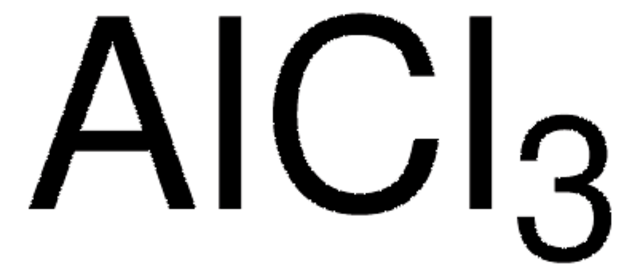모든 사진(2)
About This Item
실험식(Hill 표기법):
C10H9AgN4O2S
CAS Number:
Molecular Weight:
357.14
EC Number:
MDL number:
UNSPSC 코드:
12352302
PubChem Substance ID:
NACRES:
NA.23
추천 제품
Quality Level
분석
98%
양식
powder
mp
285 °C (dec.) (lit.)
SMILES string
Nc1ccc(cc1)S(=O)(=O)N([Ag])c2ncccn2
InChI
1S/C10H9N4O2S.Ag/c11-8-2-4-9(5-3-8)17(15,16)14-10-12-6-1-7-13-10;/h1-7H,11H2;/q-1;+1
InChI key
UEJSSZHHYBHCEL-UHFFFAOYSA-N
유사한 제품을 찾으십니까? 방문 제품 비교 안내
애플리케이션
Silver(I) sulfadiazine (AgSD) is popularly used for treating second-degree burn wounds as it acts as an antimicrobial agent and prevents infections. Silver sulfadiazine-impregnated polyurethane (PU) foam, chitosan/chondroitin sulfate films may be used for wound dressing.
Storage Class Code
11 - Combustible Solids
WGK
WGK 2
이미 열람한 고객
Silver sulfadiazine loaded chitosan/chondroitin sulfate films for a potential wound dressing application
Fajardo AR, et al.
Materials Science & Engineering. C, Materials For Biological Applications, 33(2), 588-595 (2013)
Vincenzina Monzillo et al.
The new microbiologica, 35(2), 175-182 (2012-06-19)
The aim of this study was to compare the in vitro activity and the impact on bacterial adhesion of two different catheters, one impregnated with chlorhexidine-silver sulfadiazine (C-SS) and the other not impregnated with antibacterial agents. The antimicrobial coating prevented
[Modern possibilities of the local treatment of children with burn wounds].
L I Budkevich et al.
Khirurgiia, (10)(10), 48-51 (2012-12-14)
Steven L Percival et al.
Wound repair and regeneration : official publication of the Wound Healing Society [and] the European Tissue Repair Society, 20(5), 647-657 (2012-09-19)
Both chronic and acute dermal wounds are susceptible to infection due to sterile loss of the innate barrier function of the skin and dermal appendages, facilitating the development of microbial communities, referred to as biofilms, within the wound environment. Microbial
Clinical experience with silver sulfadiazine, a new topical agent for control of pseudomonas infections in burns
Stanford, W, et al.
The Journal of Trauma and Acute Care Surgery, 9(5), 377-388 (1969)
문서
Plasmonic nanoparticles have unique optical properties that can be tailored to suit a variety of applications in the biotechnology1–8 and electronics9–16 industries.
자사의 과학자팀은 생명 과학, 재료 과학, 화학 합성, 크로마토그래피, 분석 및 기타 많은 영역을 포함한 모든 과학 분야에 경험이 있습니다..
고객지원팀으로 연락바랍니다.













